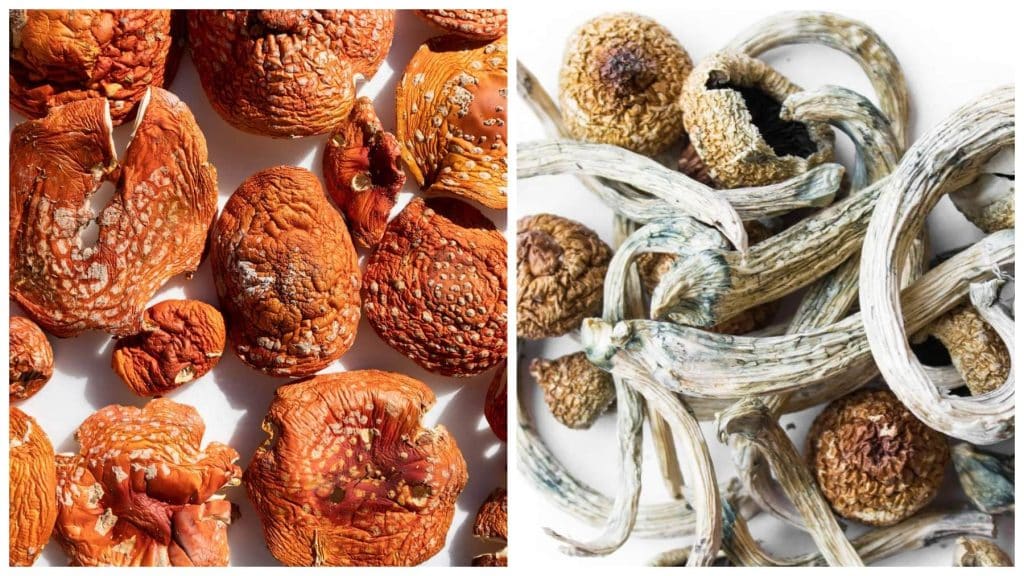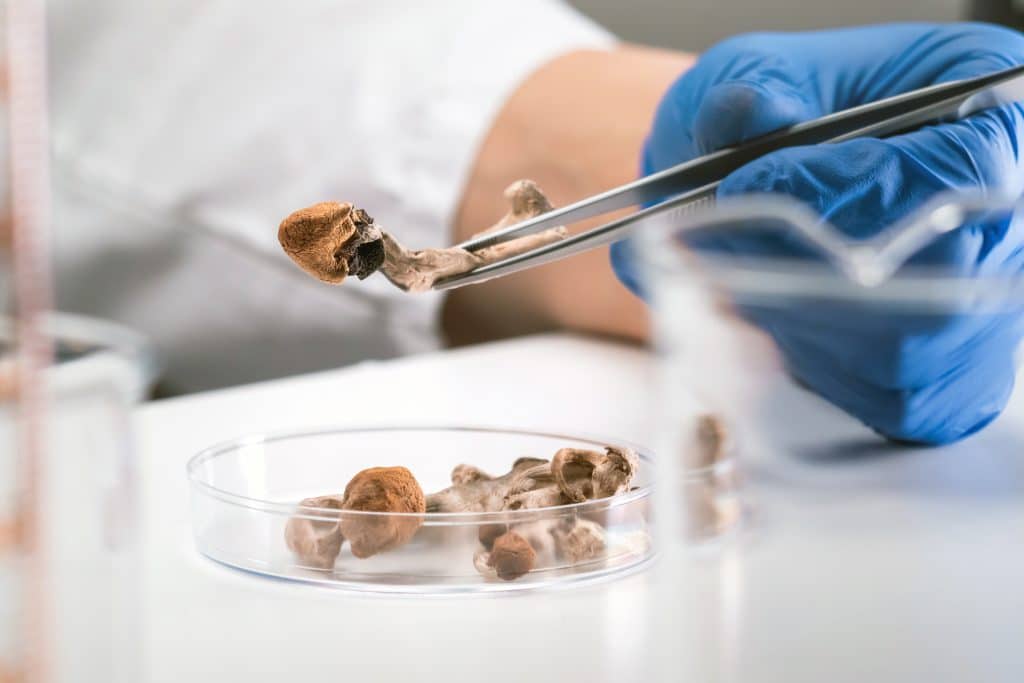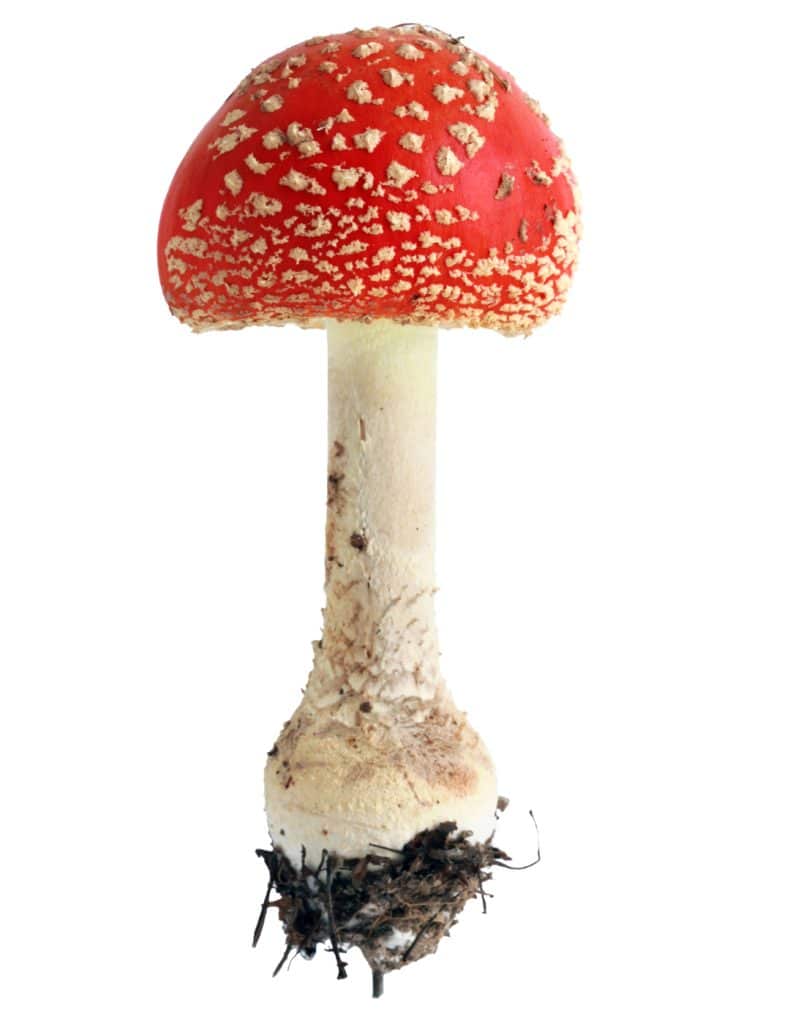As individual cities and even a couple of entire US States are working to ease up legislation against entheogens, scientists have been looking into the many health benefits of psychedelic mushrooms. In addition to finding them effective for managing numerous different mental health conditions, an area of current interest is whether or not they can be used to treat certain neurological disorders. A recent study published in the journal Neuropathics offered some preliminary evidence that the active compounds in magic mushrooms could provide long-lasting benefits to people who suffer from migraines.
The concept is nothing new, as anecdotal reports of using shrooms to treat migraines have existed for years. However, until now, there was no scientific evidence to substantiate these claims. This study is the first double-blind, placebo-controlled trial to examine this particular use for psilocybin.
Magic mushrooms explained
Before diving into the new research, let’s quickly go over some basics about magic mushrooms. First and foremost, there are two types of mushrooms that are known to produce psychoactive effects: those containing psilocybin and those containing musicmol. While both have psychoactive effects, the active ingredients and how they function in the body are very different.

Psilocybin mushrooms are a polyphyletic group of informal fungi containing psilocybin. There are a few different biological genera of psilocybin mushrooms such as Psilocybe, Panaeolus, Inocybe, Pluteus, Gymnopilus, and Pholiotina, as well as many different species – 116 total have been documented thus far. Out of those, the majority are found in Mexico (53 species), with a pretty even distribution throughout various other pockets of the world: Canada and the US (22), Australia and associated islands (19), Europe (16), Asia (15), and Africa (4).
Their appearance is unassuming and often downright drab. They are typically have small caps with long, slender stems, dark spores, and dark gills underneath. However, looks can be deceiving, and what they lack in color and pizazz, they make up for in effects. The strength of the high is very dose-dependent, ranging from only therapeutic effects with a microdose, up to completely out-of-this-world trips when taking a “heroic” dose.
Then we have Amanita muscaria; often referred to as the fly agaric, fly amanita, or simply amanita mushroom. It is a member of the Basidiomycota family of fungi, of the genus Amanita. It’s a highly adaptable mushrooms species that can now be found throughout the world, and it’s closely tied to various deciduous and coniferous trees, commonly found growing under birch and pine.
Amanita muscaria mushrooms have round, dome-shaped, red caps with white spots and white gills. They are very easily recognizable, one of the most well-known of the toadstool mushroom species, as a matter of fact. You can spot Amanita muscaria mushrooms in video games like Mario and Assassin’s Creed, Disney movies like Alice in Wonderland and Fantasia, as well as many other media sources.
The high is described as being euphoric, comforting, hypnotic, dissociative, with strong anxiolytic properties, sound and visual enhancement, feelings of unity and connectivity, dream potentiation, and a strong body high. In my limited experience with Amanita muscaria, I would say that’s it is much milder than psilocybin, but I only tried it once and it was in the form of gummies. Eating the caps or using a tincture or powder might have provided different effects.
Psilocybin shrooms to treat migraines – the research
This particular study was conducted by Emmanuelle A.D. Schindler, an assistant professor of neurology at Yale School of Medicine. It was small-scale, only 10 participants (7 women and 3 men), and lasted a few weeks. Initially, each of the subjects started keeping notes in a daily diary to track their migraine symptoms. After 2 weeks, they were each given a placebo; then after another two weeks, they all received a capsule containing low doses of psilocybin and they continued journaling for another two weeks.

“When I learned that patients with certain headache disorders reported lasting improvements after just a single or few doses of psilocybin or other psychedelics, it made me wonder whether these drugs couldn’t help us better understand the underlying pathology in headache disorders, as well as serve as a new form of treatment,” Schindler stated.
At the time, both the participants and the research staff were unaware of which capsule contained the placebo and which capsule contained psilocybin.
Schindler and her colleagues found that psilocybin was associated with a greater reduction in the frequency of migraines compared to placebo in the two weeks after capsule ingestion. Psilocybin was also associated with reductions in both headache pain severity and migraine-related functional impairments.
“This study is very preliminary and does not serve as a guide for how to manage migraine with psilocybin, but it does offer some important information. In this study, the effects of psilocybin on migraine (the disorder, not a single attack) were investigated. Psilocybin had a lasting effect on migraines, similar to the effect of taking a daily preventive medication, but psilocybin was only given a single time in this study,” Schindler told PsyPost.
Thank you for making your way over. Remember to sign up for the Cannadelics Weekly Newsletter for updates direct to your email; and to access deals a wide variety of cannabis and psychedelic products. Remember to always get high safely and responsibly.
“There is no other oral treatment that can do this,” Schindler added. “Furthermore, the dose in this study was a low dose, only minimally psychedelic, and people did not have to have a strong (or any) psychedelic experience when they took the drug to have a reduction in their migraine burden over the next couple weeks. This suggests that the acute effects of the drug while it’s in your body are not related to the improvement in migraine in the following weeks.”
These results mirror that of a previous study, also conducted by Schindler and her colleagues and published in 2015, which found that psilocybin mushrooms could effectively treat another similar neurological disorder known as cluster headaches. The study even claimed that shrooms were far better at managing cluster headaches than existing standard treatments.
Despite all the promising findings, Schindler emphasized that a lot more research needs to be done on this front before mushrooms can actually start to be utilized in conventional treatment plans.
“Different doses need to be studied and the effects and safety of repeating drug administration also need to be investigated,” she explained. “Ultimately, we still need to identify the doses and regimens that are safe and effective in managing migraine over the long-term. Migraine is a disease that stays with patients for decades, so we have to consider whether and how psilocybin might have a role in such a condition.”
That being said, no adverse effects were reported from either of the studies, but since psychedelics can be somewhat fickle and the effects can vary quite significantly from trip to trip, it’s important to be very cautious when you’re; A: new the world of entheogens, and B: you’re using them in a medicinal manor. It’s also worth noting that all of the study participants underwent “extensive physical and mental health screenings” prior to participating in the study.
What about Amanita muscaria?
All the aforementioned research is on psilocybin; so, what about muscimol? Is that also good for treating migraines? Regarding amanita mushrooms, I couldn’t find any actual studies on this topic, and anecdotal data shows mixed results. Some people report that muscimol products do, in fact, help with their migraines, while others say they developed migraines after using it.

These discrepancies can be due to several different factors including:
- What kind of product did they use? Were they caps that still contained ibotenic acid or prepared products that only had muscimol?
- Where these people already predisposed to developing migraines?
- What was the dosage of whatever product they took? And what kind of tolerance do they have to amanita muscaria?
- How was their overall health that day? Did they eat anything or drink enough water throughout the day? Were they stressed, anxious, or worried about anything?
These and many other elements can change the nature of a trip and lead to different side effects. More studies need to be conducted on Amanita muscaria mushroom compounds to better learn how they work in the human body and what medical conditions they would be best used for.
Final thoughts
As precursory as this study might be, it really shows both how far we have come on the psychedelics research front, as well as how mainstream mushrooms have become over the last couple of years. And if you suffer from migraines like I do, you know how important it is to have more treatment options available, especially some that are safe, natural, and practical to use over longer periods of time.
Welcome all! Thanks for joining us today at Cannadelics.com; a news site where we work hard to bring you the best reporting from the cannabis and psychedelics spaces. Drop by regularly to stay updated on everything going down, and subscribe to the Cannadelics Weekly Newsletter, so you’re never late to get the news.
The post New Research Finds Magic Mushrooms are Effective at Treating Migraines appeared first on Cannadelics.
Via https://cannadelics.com/2023/01/17/new-research-finds-magic-mushrooms-are-effective-at-treating-migraines/
source https://rosalinaklerkx.weebly.com/blog/new-research-finds-magic-mushrooms-are-effective-at-treating-migraines
No comments:
Post a Comment